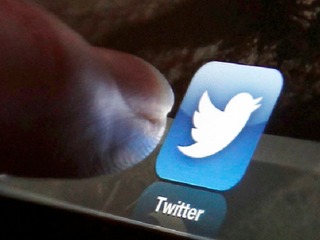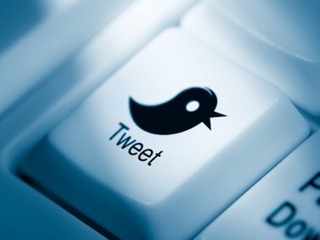The FDA outlines draft guidance on AI for medical devices
The agency also published draft guidance on the use of AI in drug development
Read more...
Abuse on social media, especially Twitter, has been a big problem for a long time. But there really isn't all that much that they can do about it, if we're being honest. They can get tougher, sure, but that won't really stop anything from happening, will it?
Twitter announced on Tuesday that it has updated its Rules in order to crack down on "abusive behaviour and hateful conduct."
"The updated language emphasizes that Twitter will not tolerate behavior intended to harass, intimidate, or use fear to silence another user’s voice. As always, we embrace and encourage diverse opinions and beliefs –but we will continue to take action on accounts that cross the line into abuse," the company wrote.
So what exactly is new? The Next Web compared the new language in the Twitter Rules to a cached version of the old rules. This is what changed.
First, there is now a section entitled "Abusive Behavior," whereas the old version lumped the subject in along with spam.
The Abusive Behavior section also has a beefed up language about just how strongly Twitter feels about abuse on the site. Spoiler alert: it doesn't like it at all!
"We believe in freedom of expression and in speaking truth to power, but that means little as an underlying philosophy if voices are silenced because people are afraid to speak up. In order to ensure that people feel safe expressing diverse opinions and beliefs, we do not tolerate behavior that crosses the line into abuse, including behavior that harasses, intimidates, or uses fear to silence another user’s voice," it says.
Twitter also added a new section on hateful conduct on the site.
"You may not promote violence against or directly attack or threaten other people on the basis of race, ethnicity, national origin, sexual orientation, gender, gender identity, religious affiliation, age, disability, or disease. We also do not allow accounts whose primary purpose is inciting harm towards others on the basis of these categories," it now says.
This is all a lot of talk, but what about action? What is Twitter going to do to those who break the rules? Will it kick them in the groin? Will it tell their mothers on them? Will it go on their permanent record?
Uh, no. The rest of the language, meaning the actual consequences for breaking the rules, is pretty much the same: people who break them may be permanently suspended.
Twitter, to its credit, has been trying to curb abuse, and not only through stricter language. It has increased the size of its team, and given users new tools to help combat abuse. It also set up the Twitter Safety Centre to help give users a better education on what is, and is not, abuse.
Abuse on social media has been making some headlines lately. Earlier this month Facebook, Google and Twitter were forced, by the German government, to take a stronger stand on hate speech, making it easier for users and anti-racism groups to report hate speech by creating specialist teams to deal with these incidents at the three companies.
The reason for that order was a recent rise in hate speech as a result of the Syrian refugee crisis, over a million of whom are set to be coming to Germany in the coming year. It was also the result of an investigation into Facebook by the Germany government last month over whether or not Facebook had failed to remove hate speech.
Of course, there are all sorts of thorny problems that come with trying to crack down on such things, namely issues of freedom on speech.
Mark Zuckerberg has, in a way, been talking out of both sides of his mouth on this issue. While at once voicing support of Muslims, telling them, "you are always welcome here and that we will fight to protect your rights and create a peaceful and safe environment for you," he has also defaulted to the "it's free speech" argument when confronted with hateful language used on Facebook.
"We're trying to connect everyone in the world and give everyone a voice," Zuckerberg said in a town hall meeting following the Charle Hebdo attacks in Paris in January. "This is about freedom of expression."
Twitter, and the other social networks, have two issues to deal with. First is that fine line between freedom of speech and abuse, and the second is whether or not they can ever really eradicate that abuse from their sites. Both are issues that they will likely be dealing with for years to come.
(Image source: blog.twitter.com)
The agency also published draft guidance on the use of AI in drug development
Read more...The biggest focus areas for AI investing are healthcare and biotech
Read more...It will complete and submit forms, and integrate with state benefit systems
Read more...Startup/Business
Joined Vator on
Twitter is an online information network that allows anyone with an account to post 140 character messages, called tweets. It is free to sign up. Users then follow other accounts which they are interested in, and view the tweets of everyone they follow in their "timeline." Most Twitter accounts are public, where one does not need to approve a request to follow, or need to follow back. This makes Twitter a powerful "one to many" broadcast platform where individuals, companies or organizations can reach millions of followers with a single message. Twitter is accessible from Twitter.com, our mobile website, SMS, our mobile apps for iPhone, Android, Blackberry, our iPad application, or 3rd party clients built by outside developers using our API. Twitter accounts can also be private, where the owner must approve follower requests.
Twitter started as an internal project within the podcasting company Odeo. Jack Dorsey, and engineer, had long been interested in status updates. Jack developed the idea, along with Biz Stone, and the first prototype was built in two weeks in March 2006 and launched publicly in August of 2006. The service grew popular very quickly and it soon made sense for Twitter to move outside of Odea. In May 2007, Twitter Inc was founded.
Our engineering team works with a web application framework called Ruby on Rails. We all work on Apple computers except for testing purposes.
We built Twitter using Ruby on Rails because it allows us to work quickly and easily--our team likes to deploy features and changes multiple times per day. Rails provides skeleton code frameworks so we don't have to re-invent the wheel every time we want to add something simple like a sign in form or a picture upload feature.
There are a few ways that Twitter makes money. We have licensing deals in place with Google, Yahoo!, and Microsoft's Bing to give them access to the "firehose" - a stream of tweets so that they can more easily incorporate those tweets into their search results.
In Summer 2010, we launched our Promoted Tweets product. Promoted Tweets are a special kind of tweet which appear at the top of search results within Twitter.com, if a company has bid on that keyword. Unlike search results in search engines, Promoted Tweets are normal tweets from a business, so they are as interactive as any other tweet - you can @reply, favorite or retweet a Promoted Tweet.
At the same time, we launched Promoted Trends, where companies can place a trend (clearly marked Promoted) within Twitter's Trending Topics. These are especially effective for upcoming launches, like a movie or album release.
Lastly, we started a Twitter account called @earlybird where we partner with other companies to provide users with a special, short-term deal. For example, we partnered with Virgin America for a special day of fares on Virginamerica.com that were only accessible through the link in the @earlybird tweet.
What's next for Twitter?
We continue to focus on building a product that provides value for users.
We're building Twitter, Inc into a successful, revenue-generating company that attracts world-class talent with an inspiring culture and attitude towards doing business.

